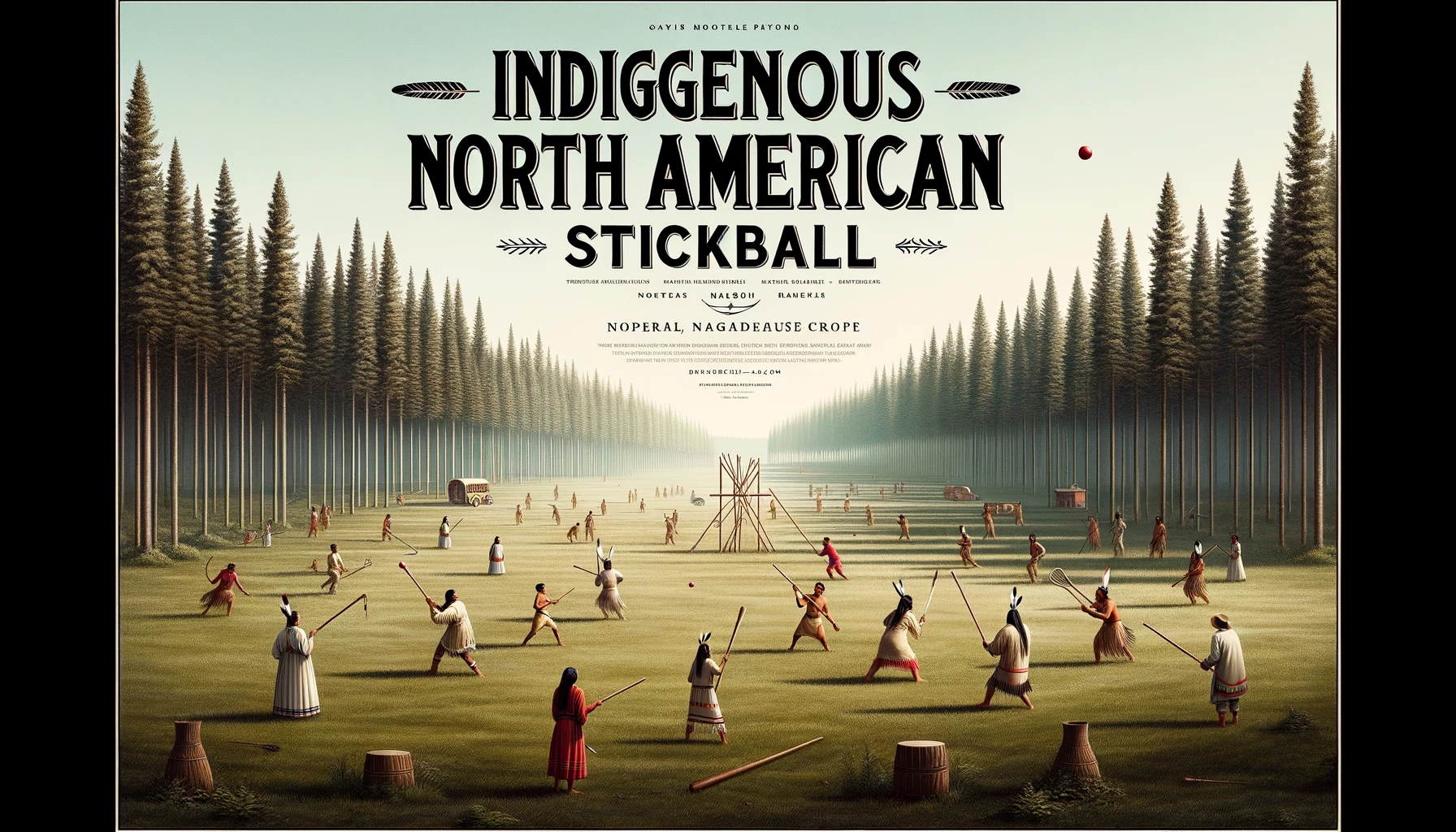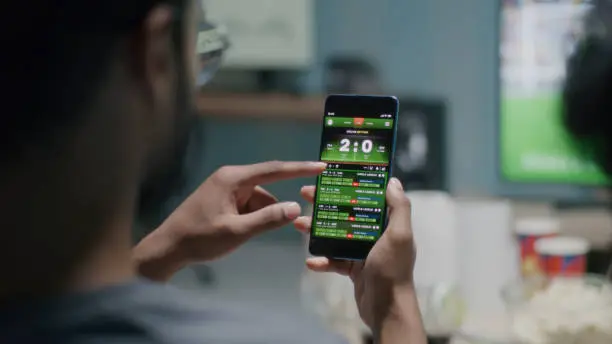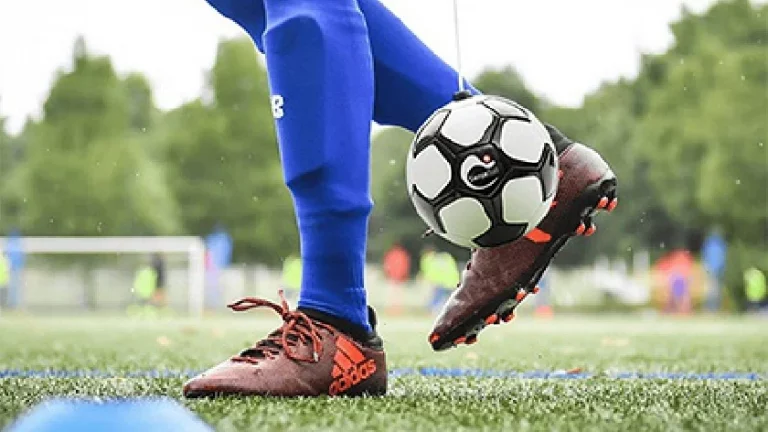Indigenous North American Stickball: A Legacy of Tradition and Sport
Indigenous North American stickball isn’t just a game; it’s a deep-rooted legacy that resonates across generations. A cornerstone of Native American culture, this team sport unfolds on vast open fields, echoing the traditions, disputes, and harmony of tribes gone by.
Quick Glance 🧐
- 🏆 What is it?
- Stickball is akin to lacrosse for the untrained eye. Participants brandish two sticks, skillfully maneuvering a ball with the aim of scoring against the opposing team.
- 👥 Who plays it?
- It’s not just a game but a tapestry of cultural heritage. Tribes like the Cherokee, Chickasaw, Choctaw, Muscogee, and Seminole have revered this sport for its ability not only to entertain but also to mediate in times of tribal disagreements.
- 📜 Why is it significant?
- Beyond the field’s boundaries, stickball encapsulates stories of tribal ceremonies, rituals, and even conflict resolutions. It’s not just about the score; it’s about community, tradition, and a shared history.
📌 Note: Throughout this article, we will delve deep into the world of Indigenous North American stickball. So, buckle up for a journey through time, tradition, and sport.
🚀 Let’s kickstart this exploration into the intricate facets of Indigenous North American stickball, understanding its origins, cultural significance, and the indelible mark it leaves on Indigenous cultures even today. 🚀

History of Stickball 📜
Origins and Early History 🌱
Long before the modern games we know today, Indigenous North American stickball took root in the very heart of Native American communities. It was more than just a sport; it was an embodiment of their culture, their disputes, and their celebrations. Born in the vast plains and serene landscapes of North America, stickball was played with vigor, passion, and a deep sense of community.
Table: Origins of Stickball
| Tribe | First Documented Play |
|---|---|
| Cherokee | Early 17th Century |
| Choctaw | Mid 17th Century |
| Seminole | Late 17th Century |
Evolution Over the Centuries 🌟
As with all things, stickball too underwent transformations. From the primitive version played with wooden spoons to the more structured game with netted sticks, the evolution was profound. Yet, at its core, the spirit of the game remained unchanged. While the equipment and rules saw modifications, the essence – reflecting tribal camaraderie, disputes, and resolutions – persisted.
🔍 Did you know? In the mid-17th century, a Jesuit missionary named Jean de Brébeuf documented the game after witnessing the Wyandot tribe in action. This account offers one of the earliest written evidences of the game.
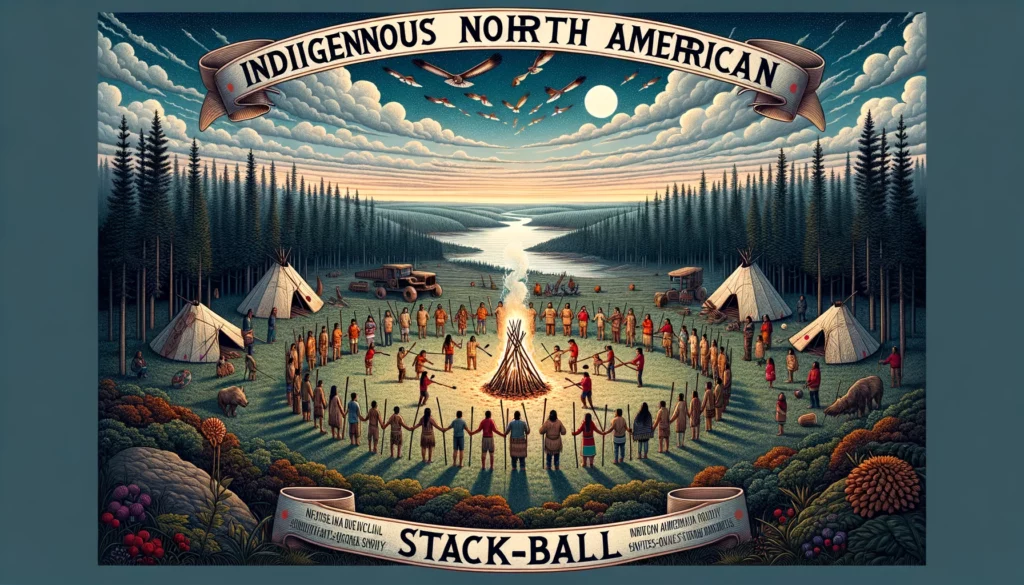
Historical Significance in Indigenous Communities 🌍
Stickball wasn’t just a pastime; it held a mirror to the tribal communities’ ethos. It was utilized to resolve conflicts and establish peace. Elders would often organize games, turning the field into an arena of non-violent dispute resolution.
Moreover, major stickball events could stretch over days, drawing participants from neighboring villages. These weren’t mere games; they were grand occasions fostering unity, showcasing valor, and celebrating tribal heritage.
Timeline table for the history
| Year/Time Period | Significant Event | Description |
|---|---|---|
| Before 18th Century | Origins of Stickball | The sport was first played well before the 18th century in North America, primarily by Indigenous communities. |
| Mid-17th Century | Jean de Brébeuf’s Observation | Jean de Brébeuf, a Jesuit missionary, documented the Native American game after witnessing the Wyandot people play. |
| 1763 | Ottawa Tribe’s Strategic Game | The Ottawa tribe used stickball to distract and subsequently attack soldiers at Fort Mackinac. |
| 1834 | Introduction in Montreal | After the Caughnawaga Indians demonstrated stickball in Montreal, Canada, it gained popularity among Canadians. |
| 1856 | Modern Lacrosse Codified | William George Beers transformed the indigenous game into what is known today as modern lacrosse. |
| Mid- to Late-20th Century | Revival in North America | Stickball saw a resurgence in the southern region of North America and evolved into a street game in the Northeastern United States. |
| Today | Modern Tribal Tournaments | Modern stickball tournaments, like the Jim Thorpe Games and Choctaw Labor Day Festival, are held, celebrating the sport’s rich heritage. |
📌 Transitioning through time, this sport has retained its place, not just as a game, but as a testament to the rich and vibrant history of Indigenous North American communities.
🔥 Up next, we’ll delve deeper into the intricacies of the rules and gameplay dynamics that make stickball the riveting game it is. 🔥
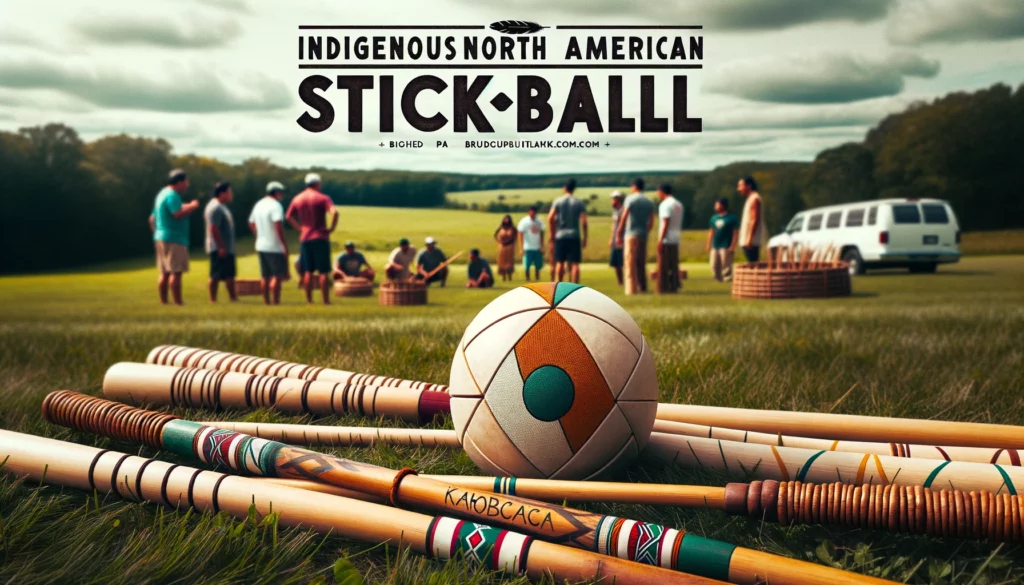
Rules and Gameplay 🕹️
Basic Rules of Stickball 📋
At its core, Indigenous North American stickball is a team sport, played on an expansive open field. The primary objective? Control the ball and aim for the opposing team’s goal. But, there’s a twist! Players wield two sticks, using them to catch, carry, and shoot the ball, all while ensuring they don’t touch the ball with their hands.
📌 Points to Remember:
- The ball is launched into play with a central toss, initiating a scramble.
- Players can only use their sticks to control the ball.
- Direct hand contact with the ball is prohibited.
Variations Across Tribes 🌐
While the essence of stickball remains consistent, the rules can vary subtly across tribes. For instance:
- Choctaw Stickball: Players use handcrafted sticks, known as kabocca, and a woven leather ball, termed towa. The goal? Propel the ball using the sticks, striking the opponent’s goalpost. Direct hand contact? A strict no-no!
- Cherokee Version: This variation might have slight differences in field dimensions, stick designs, or scoring methods.
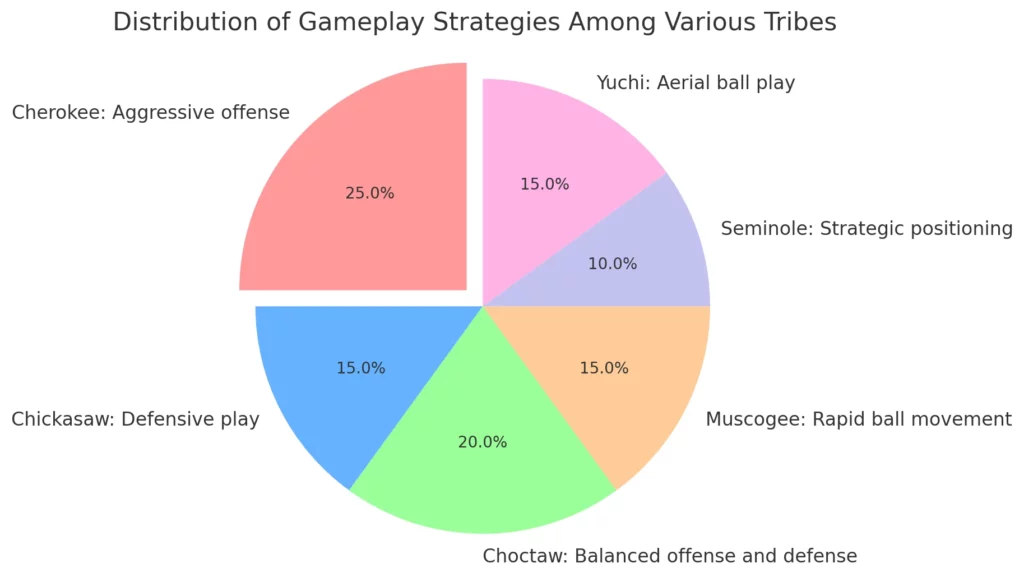
It’s this diversity that makes stickball not just a game, but a rich tapestry of tribal traditions and nuances.
Gameplay Dynamics and Strategies 🚀
The beauty of stickball lies in its strategic depth. With every tribe bringing its unique flavor to the game, strategies can vary widely:
- Positional Play: Much like modern-day sports, players assume specific positions – defenders guarding the goal, midfielders controlling the game’s pace, and attackers aiming for the score.
- Physicality: It’s a full-contact sport, making strength and agility paramount. Dodging opponents, making swift stick maneuvers, and strategic team plays are all part and parcel of the game.
- The Element of Surprise: Passing the ball is more than just a move; it’s a trick! Earlier, dodging an opponent was perceived as cowardice, making direct confrontations an exhilarating watch.
Table Title: Basic Rules of Stickball Across Different Tribes
| Tribe | Basic Rules | Unique Aspects or Variations |
|---|---|---|
| Cherokee | – Played with two sticks per player – Ball must not be touched with hands – Scoring by hitting opponent’s goalpost | Traditional Cherokee games might have specific ceremonial aspects or game rules tied to their cultural practices. |
| Chickasaw | – Played with two sticks per player – Ball must not be touched with hands – Scoring by hitting opponent’s goalpost | The Chickasaw might have different field dimensions or specific rituals before the game. |
| Choctaw | – Played with handcrafted sticks or kabocca – Ball known as “towa” – Points scored by hitting the opposing team’s goalpost with the ball | Choctaw Stickball has a specific version where the ball must be advanced using only the sticks, never touching or throwing the ball with hands. |
| Muscogee (Creek) | – Played with two sticks per player – Ball must not be touched with hands – Scoring by hitting opponent’s goalpost | The Muscogee might have specific pre-game rituals or ceremonial dances associated with their version of stickball. |
| Seminole | – Played with two sticks per player – Ball must not be touched with hands – Scoring by hitting opponent’s goalpost | Seminole tribes might have unique stick designs or game strategies passed down through generations. |
| Yuchi | – Played with two sticks per player – Ball must not be touched with hands – Scoring by hitting opponent’s goalpost | The Yuchi might incorporate specific chants, songs, or ceremonies before, during, or after a game. |
🔍 Pro Tip: Understanding the opponent’s tribal gameplay can be the key to devising a winning strategy. While the basics remain the same, the subtle nuances can make all the difference!
As we journey further, we’ll explore the fascinating equipment that makes stickball the iconic game it is. 🌟
Equipment Used 🏑
Traditional Equipment and Its Significance 🌳
The soul of Indigenous North American stickball lies not just in the game itself, but also in the traditional equipment used, each piece echoing centuries of history and significance.

- Stickball Sticks (Kabocca): Made from hardwoods like hickory, these are more than just tools for the game. They are symbols of the tribe’s connection to nature. The wood is shaped and bent, culminating in a loop that’s tightly bound with leather or electrical tape.📜 Note: Historically, these sticks were akin to large wooden spoons with no netting. As time evolved, they began featuring netting, crafted from leather strips or deer sinew, forming a makeshift cradle for the ball.
- The Ball (Towa): Crafted from tightly wadded cloth, wrapped in woven leather strips, the ball is the focal point of the game. Earlier versions were even made of wood or deer skin stuffed with hair.
These traditional pieces aren’t just equipment; they are artifacts, every curve and texture narrating tales of bygone matches, legendary players, and tribal pride.
Modern Adaptations and Changes 🔧
As with everything, time has ushered in changes, even in the realm of stickball:
- Stick Designs: While traditional designs persist, we now see innovations accommodating netting, which aids players in catching and propelling the ball with more precision.
- Material Innovations: Modern sticks might incorporate synthetic materials, ensuring durability and weather resistance. Balls, too, have seen changes, with some now being made of rubber or other modern materials.
- Safety Gear: Recognizing the intense physicality of the game, players today might incorporate protective gear, such as helmets or shin guards, though it’s still not widespread.
| Traditional Equipment | Uses | Significance | Modern Adaptations |
|---|---|---|---|
| Handcrafted Sticks (Kabocca) | To control and shoot the ball | Symbol of tradition and craftsmanship | Modernized designs for better grip |
| Woven Leather Ball (Towa) | Main object of the game | Central to the gameplay | Synthetic materials for durability |
| Ceremonial Regalia | Worn during pre-game rituals and ceremonies | Represents tribal traditions and spiritual beliefs | Updated designs while retaining traditional elements |
🔍 Pro Tip: Whether choosing traditional equipment or its modern counterpart, the key is to ensure they resonate with the spirit of the game. After all, every piece is a bridge connecting the rich tribal past with the present.
Up next, let’s delve into the world of tribal teams and the legends they’ve birthed. 🌟
Tribal Teams and Players 🌐
The legacy of Indigenous North American stickball isn’t just about the game; it’s also about the tribes that championed it and the legendary players who’ve left an indelible mark on its history.
Prominent Tribal Teams: History and Today 📜
Historical Tribes:
- Cherokee: Known for their agility and strategy, the Cherokee were stickball stalwarts, using the game as both sport and means of settling disputes.
- Choctaw: They have a rich history intertwined with stickball. Their games, often referred to as “Choctaw Stickball,” became synonymous with tribal pride.
- Chickasaw, Muscogee, Seminole, and Yuchi: Each of these tribes has had their unique flavor of the game, adding to the rich tapestry of stickball’s legacy.
Modern Tribal Teams: In today’s age, while the essence of the tribes remains, the teams often represent broader communities or institutions. Events such as the Choctaw Labor Day Festival and the Jim Thorpe Games witness a confluence of teams from various tribal backgrounds, keeping the spirit alive.
Notable Players and Their Contributions 🌟
- Jim Tubby: A Mississippi Choctaw player, his name is etched in history not just for his prowess on the field, but also for the iconic 1908 photograph capturing him preparing for a game.
- Chief Pontiac of the Ottawa tribe: While not a player per se, his strategic use of a stickball game to ambush Fort Mackinac in 1763 is a testament to the game’s significance in tribal strategies and politics.
- Jim Thorpe: While more renowned for his Olympic feats, Thorpe’s roots in tribal games, including stickball, laid the foundation for his athletic journey.
📌 Tip: To truly understand the essence of the game, one must delve into the stories of these tribes and players, each narrative adding depth and dimension to the world of Indigenous North American stickball.
With our journey through tribal teams concluded, let’s explore the cultural significance this sport holds in the next segment. 🍂
Cultural Significance of Stickball 🍁
Indigenous North American stickball isn’t merely a sport; it’s an embodiment of the rich tapestry of culture, tradition, and history interwoven through generations of Indigenous communities.

Role in Tribal Ceremonies and Rituals 🪶
- Tribal Ball Dance: Before the game’s commencement, tribes often held a dance. This wasn’t just a celebration, but a spiritual ritual. It was believed that the dances, filled with conjuring ceremonies and spiritual songs, would bring good luck to the team.
- Rituals of Preparation: Medicine men and shamans played pivotal roles, not just as coaches but as spiritual guides. They’d perform blessings, ensuring players were spiritually equipped for the game. A ritual, known as “going to the water,” was conducted wherein each player would receive ritualistic scratches, believed to enhance their performance.
- Betting Ceremonies: On game day, each player was expected to place a wager. This wasn’t about material gain, but more a testament to their commitment and belief in their team’s prowess. From trinkets to even more significant items, these bets symbolized the stakes of the game, both in sport and in tribal significance.
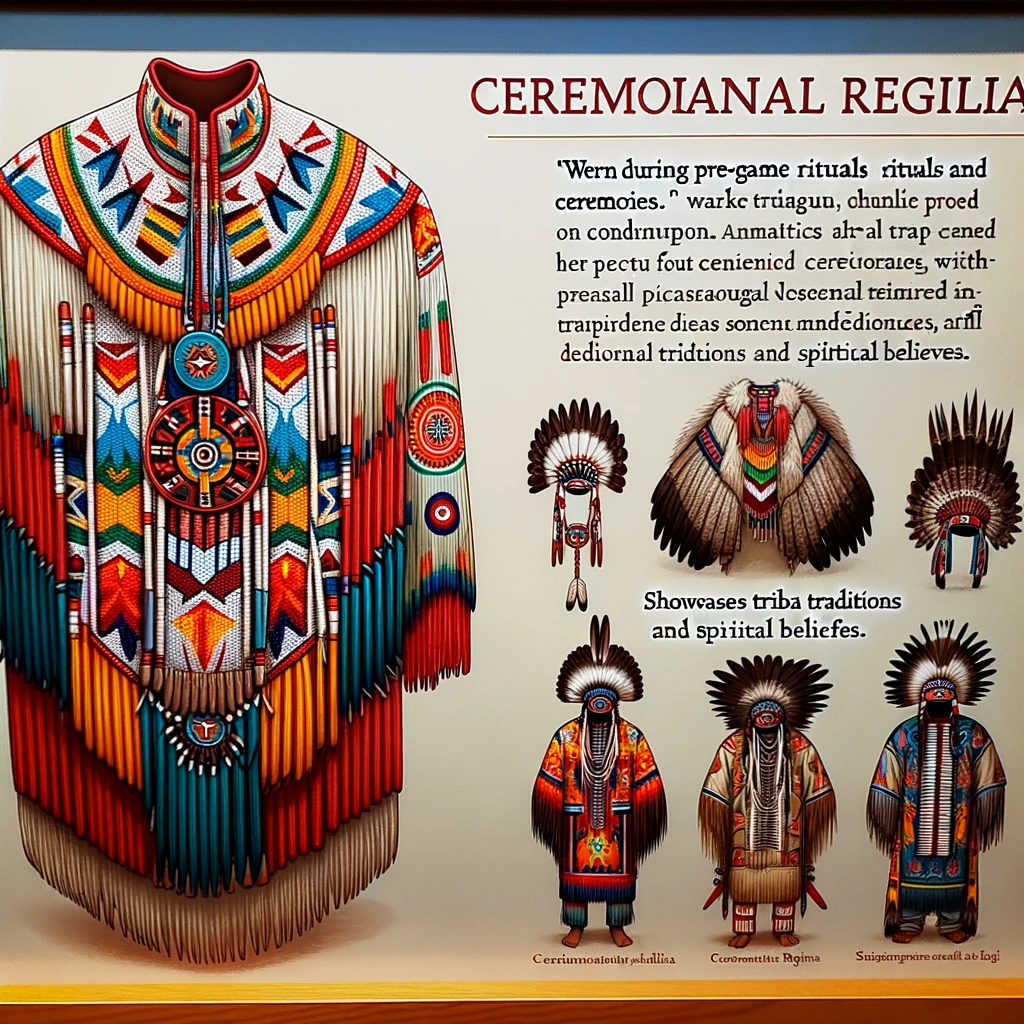
Symbolism and Cultural Narratives 🌌
- A Peaceful Alternative to War: More than a game, stickball was often a means to settle disputes. Instead of resorting to violence, tribes would settle their differences on the field. Winning the game was akin to winning a dispute.
- Training Ground for Warriors: The game wasn’t just about recreation; it was a training ground. Young warriors would toughen up for real battles, learning about strategy, teamwork, and resilience.
- Tales of Strategy and Deception: Stories like Chief Pontiac’s use of a stickball game to gain entrance into Fort Mackinac highlight the game’s strategic significance in tribal narratives.
- Cultural Preservation: In an ever-evolving world, stickball stands as a beacon of cultural preservation. Every game played is a testament to tribes’ commitment to keeping their traditions alive.
| Tribes | Cultural Narratives or Symbolism |
|---|---|
| Cherokee | Unity and settling disputes |
| Chickasaw | Valor and bravery in gameplay |
| Choctaw | Harmony with nature and spiritual connection |
| Muscogee | Tribal unity and community strength |
| Seminole | Celebration of harvest and tribal prosperity |
| Yuchi | Warrior spirit and combat training |
🔍 Note: At the heart of every pass, goal, and victory in stickball lies centuries of Indigenous history and tradition. The game is more than a sport; it’s a living, breathing narrative of the Indigenous North American spirit.
Pre-game Rituals 🌠
Before the crack of the stick or the rush of players, Indigenous North American stickball games are steeped in rituals that honor the game’s sanctity and the community’s ancestors.
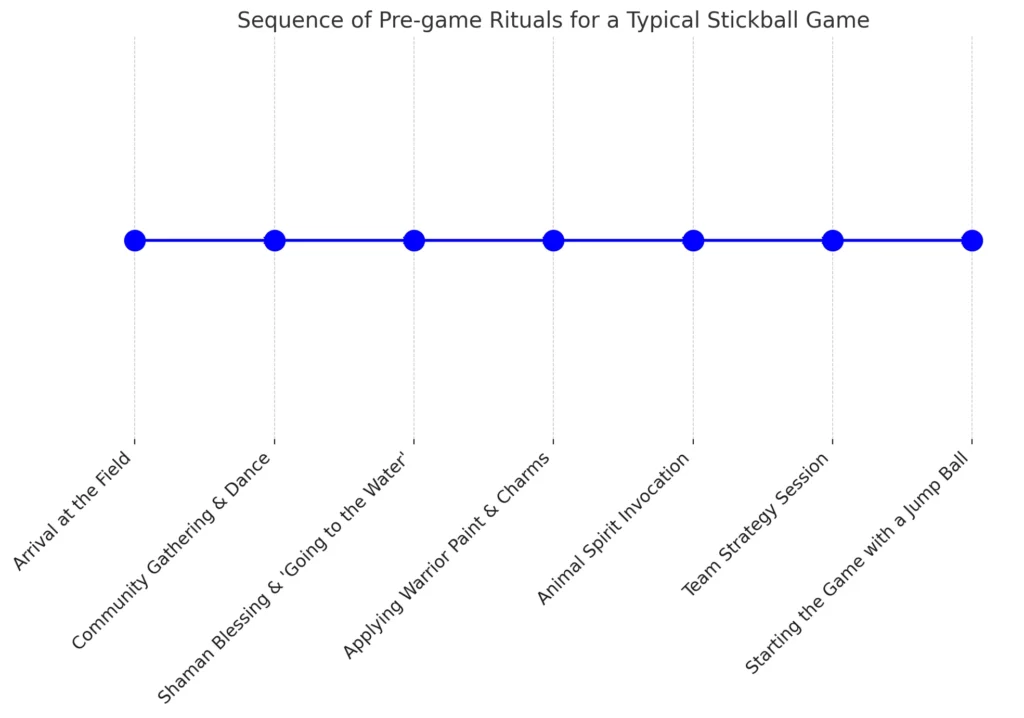
Traditional Rituals Performed Before a Game 🌿
- Ball-play Dance: 🕺 Often taking place the night before the game, the tribal ball dance was an integral part of pre-game ceremonies. Both players and supporters participated, immersing themselves in singing, dancing, and seeking divine support.
- Conjuring Ceremonies: 🔮 These spiritual ceremonies were believed to channel positive energies and bring good luck to the team. Players would don ceremonial regalia, with sacrifices often taking place to invoke the spirits’ blessings.
- “Going to the Water” Ritual: 💦 Led by a shaman or medicine man, this mystic rite involved blessing both the game and the players. The ritualistic scratches given to players were not merely symbolic. They were believed to let the blood flow more freely during the game, increasing the chances of victory.
- Wager Placement: 🎲 Before the game’s start, each player placed a wager, ranging from trinkets to items of personal significance. This act wasn’t just about gambling but was a symbolic gesture, showcasing commitment and the high stakes of the game.
Significance and Meaning Behind Each Ritual 📜
- Connection to Ancestors: 🌌 These rituals served as a bridge, connecting current players to their ancestors. Through dances and ceremonies, players felt the presence and blessings of those who played before them.
- Spiritual Preparedness: ✨ Beyond physical prowess, the game required spiritual strength. Rituals ensured players were spiritually aligned and fortified against opponents.
- Community and Unity: 🤝 Rituals weren’t just about individual players; they were about the community. Through these shared practices, tribes reaffirmed their unity, reminding everyone that the game was about collective strength.
- Respect for the Game: 🏆 Every ritual underscored the game’s importance. It wasn’t merely about winning but honoring the game’s rich history and the values it represented.
Here’s a table detailing the different tribes, their traditional pre-game rituals, and the significance of each:
| Tribe | Traditional Pre-game Ritual | Significance |
|---|---|---|
| Cherokee | Ball-play Dance | A community dance to invoke good luck and intimidate opponents. |
| Choctaw | Going to the Water | A purification ritual where players receive blessings and ritualistic scratches to ensure victory. |
| Muscogee | Warrior Paint Ceremony | Applying paints and charms to channel the spirit of warriors and animals, seeking their strength. |
| Seminole | Fasting & Meditation | Players fast and meditate to mentally prepare and connect with the game’s spirit. |
| Yuchi | Animal Spirit Invocation | Calling upon animal spirits for their agility, strength, and skills during the game. |
🔍 Note: These pre-game rituals are more than mere traditions. They are a testament to the deep reverence tribes have for stickball, recognizing its importance in preserving culture, settling disputes, and strengthening community bonds.
Upcoming Tournaments and Events 🏆
The rich tapestry of Indigenous North American stickball is not just bound to history; its legacy continues with tournaments and events that celebrate the game’s tradition while fostering community spirit.
Information on Upcoming Stickball Tournaments 📅
- Jim Thorpe Games: 🌟 Named after the legendary Native American athlete, this annual event sees tribes from across North America participate in stickball, celebrating both the sport and their shared heritage.
- Choctaw Labor Day Festival: 🎉 A vibrant festival that brings together culture, music, and of course, stickball. Teams compete fiercely, with the event culminating in a grand finale that’s a treat for all.
- Choctaw Indian Fair World Series: ⚾ Drawing parallels with baseball’s World Series, this is arguably one of the most prestigious stickball tournaments. Hosted by the Mississippi band of Choctaws in Philadelphia, Mississippi, it’s a must-attend for every stickball enthusiast.
How to Participate or Spectate 🎟️
- Registration: 📝 Tribes or teams interested in participating typically need to register in advance. Check the respective event’s official website or contact tribal councils for registration details.
- Spectator Tickets: 🎫 For those eager to witness the game, tickets are usually available for purchase online or at the venue. Early bird discounts might be available, so it’s wise to book in advance.
- Event Guidelines: 📜 Given the cultural significance of these events, attendees are often expected to adhere to specific guidelines, ensuring respect for traditions and rituals.
- Getting Involved: 🤲 For those wishing to dive deeper into the world of stickball, volunteering opportunities might be available. From helping with event logistics to assisting in ceremonies, it’s a chance to experience the game from a unique perspective.
🔍 Tip: Even if you’re unfamiliar with the game’s rules, attending a tournament is a fantastic way to immerse oneself in Indigenous culture and the thrilling dynamics of stickball. Bring along a friend, and let the games begin!
Conclusion 🌟
In tracing the journey of Indigenous North American stickball, we’ve ventured through centuries of cultural significance, tribal traditions, and intense gameplay. This game, more than just a sport, represents the heartbeat of many Indigenous communities, encapsulating their history, values, and spirit.
From its ancient origins to its current resurgence, stickball remains a testament to the resilience and unity of Indigenous North American tribes. It’s a game that transcends time, bridging the past with the present and echoing the voices of ancestors in every match.
🌐 For those who’ve just discovered the wonders of this sport, this is only the beginning. There’s a vast world of stickball waiting to be explored, with every game offering a new story, a new lesson. We encourage you to delve deeper, perhaps even grab a pair of stickball sticks and try your hand at the game.
💭 Final Thought: Embracing stickball means embracing a rich tapestry of culture, history, and community. Whether you’re a player, a spectator, or a curious soul, there’s a place for you in this beautiful journey. Let the legacy of stickball inspire, educate, and most importantly, unite us all.

